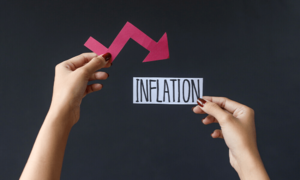Brazilian farmers looking to expand soyabean acreage next season to meet strong Chinese appetite will have to weigh rising land costs in farm country, growers and analysts said on a crop tour of fields in Mato Grosso. Producers in the country's No.1 grain state may prefer to spend the returns from recent bumper crops on boosting the productivity of their existing farms, they said, for example by buying better equipment.
Mato Grosso's planted soya area is expected to grow 1.2 percent in the 2018/19 season, farmer-run research institute IMEA estimated on Monday in its first forecast for the crop, to be planted around September. That would expand the area sown with soyabeans in the state to a record 9.58 million hectares (23.7 million acres), up 13.5 percent in five years.
The rapid growth has boosted expectations that Brazil will surpass the United States this year to become the largest soyabean producer for the first time in history. But the boom may be slowing over the issue of land costs. "I would like to increase soya acreage but not at current land prices," said farmer Elzo Pozzobon in the Mato Grosso town of Vera.
He said it costs the equivalent of 15 bags of soya weighing 60 kilos (132 lb) to lease a hectare in the area. With average yields in Mato Grosso hovering around 56 bags per hectare, growers risk not covering production costs, which he estimated at 45 bags. Rafael Gatto, who farms about 800 hectares in Vera, said he ran out of room to grow more soya, so he will invest instead in a new irrigation system in order to plant three crops a year: soya, corn and beans.
Brazil's vast territory makes it one of the few major grain producers where agricultural areas and output can still grow on an industrial scale, yet some farmers are pushing into less productive land. Andra Debastiani, a partner at consultancy Agroconsult, said high soyabean prices were encouraging farmers to plant on degraded land, including converted pastures.
Mato Grosso has between 2 million and 4 million hectares of pastures available for planting, according to federal research agency Embrapa. Farmer Darlan Anese said he was looking to lease 1,200 hectares, expanding his soya area by 46 percent next season, but first he will have to do some serious bargaining. "Everything is very expensive and mistakes can cost us dearly," he said.
BR100
11,869
Increased By
3.2 (0.03%)
BR30
35,992
Increased By
295 (0.83%)
KSE100
114,060
Decreased By
-88.7 (-0.08%)
KSE30
35,887
Decreased By
-65.1 (-0.18%)


























Comments
Comments are closed.